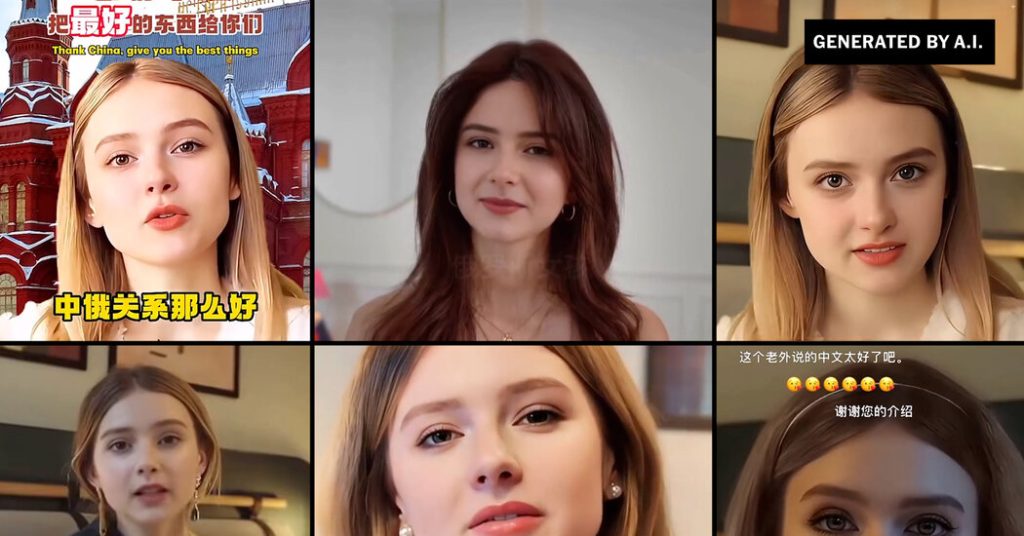A trend on Chinese social media involves the manipulation of videos using artificial intelligence to showcase young Russian women praising China or promoting products. These videos often target nationalist Chinese men and aim to capitalize on the growing China-Russia partnership and tap into national pride and sentiments of patriotism in China. The videos, some labeled with tags like “Russian wife” and “Russian beauty,” feature young women expressing admiration for China and gratitude for its support of Russia through economic difficulties. However, many of these videos are fake and use footage from foreign influencers that has been modified to appear as if the women are endorsing these messages.
One example of this manipulation involves Australian career strategist Shadé Zahrai, whose videos were overdubbed with Mandarin Chinese to make it seem like she was promoting Russian products to a Chinese audience. Another influencer, Olga Loiek, a Ukrainian student, had her YouTube videos reworked to portray her as a Russian woman expressing gratitude towards China. The use of foreign faces in these videos is aimed at appealing to nationalist sentiments among Chinese viewers, who often consume such content to reaffirm their nationalistic and masculine pride.
The creators of these videos are taking advantage of the popularity of shopping via live streaming and short videos in China, as well as the increasing accessibility of AI technology. While some real Russian influencers exist on Chinese social media, the prevalence of AI-generated videos for commercial purposes is on the rise. These videos often direct viewers to product links, suggesting that commercial interests are a primary motivation behind their creation.
Despite the Chinese government’s encouragement of online nationalism, there is no evidence linking the deepfake videos to official sources. However, the use of AI to generate videos for commercial purposes is likely to increase, as technology continues to advance rapidly. The creators of these videos, some of whom have earned money from their accounts, manipulate topics and trends to attract viewers and generate income. While recent scrutiny has led to the removal of some AI videos from social media platforms, the practice of creating fake videos using foreign faces and languages is likely to continue unless stricter regulations are enforced globally.


